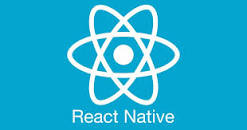Cloud Native
Why enterprises should embrace cloud native
As per a recent World Economic Forum report, two-thirds of the world’s major enterprises would not survive after next 25 years. Enterprises need to transform themselves to survive the disruption originating from fast paced technology evolution that both reduce the entry barrier for new age challengers and increase customer expectations.
Traits of 21st-Century Enterprise
- Data Driven Culture – Enterprises need to evolve from being people-dependent to being data-driven yet people-centric. They have to extensively apply technology to transform their execution and business model to achieve customer success delivered through ecosystem of distributed teams.
- Relentless Innovation – Companies should innovate relentlessly across all areas of the business, including product R&D, customer support and engagement, supply chain, talent development, sales and marketing.
- Customer Centric – Enterprises need to be aware that customers are no longer satisfied with point solutions but expect a consistently satisfactory end-to-end experience. Thinking as customer is the key to serve customers in age of hyper personalisation.
- Agile and lean – Enterprises need to be lean and agile to handle fast-paced maneuvers of changing market conditions and customer expectations.
- Being Purposeful – Organization must have clear purpose that enables full engagement of heart and mind. Purpose creates the ability for people to care about something much bigger than their personal concerns and fully apply their talent to meaningful endeavours. Creating sustained outcomes that drive value and fuel growth, whilst strengthening our communities, environment and societies.
What is Cloud Native
Cloud native is an approach for building and running applications that exploits cloud computing delivery model. Cloud native technologies empower organizations to build and run scalable applications for diverse environments like public, private or hybrid clouds. Containers, service meshes, micro services, immutable infrastructure and declarative APIs exemplify this approach. Cloud native is about speed and agility that is achieved on key pillars of cloud infrastructure; micro services based application architecture; modern design principles (e.g. twelve-factor application); containerisation for software packaging; automation in configuration & deployments and Cloud native enabling services
Enterprise software development.
Cloud Native is not only building applications for cloud infrastructure, rather these are set of practices that enable scalability, agility and resilience within culture of organisation. These practices not only impact working of technology team within enterprise but are foundation around which all department of enterprise need to be realigned enabling enterprise to remain relevant and competitive.
Cloud Native Technologies Landscape
There are multiple visualisations for landscape of cloud native technologies, platforms and solutions. Cloud Native computing foundation (CNCF) has over 1100 registered companies offering solutions across different categories of landscape.
Figure below depicts landscape of cloud native technologies used across software deployment, service deployment and service operation phases.
Cloud Native Landscape
SW Development
Mobile APP Platforms


Service Delivery
SW Build Platforms


Service Proxy, Mesh


API Gateway

Service Operations
Service Provisioning


Security & Compliance

Key Management

HW Infrastructure
AWS Cloud

GCS Cloud

Azure Cloud

Benefits of the Cloud Native Approach
Applications developed in the cloud will naturally perform well in this environment, ultimately letting you leverage everything it has to offer. What exactly will you gain once you decide to invest in the cloud-native approach?.
- Faster time to market: The pace at which enterprise can deliver value to their customers is the factor that makes them stand out among their competitors. Cloud native development processes including DevOps processes and automation results in accelerated software delivery and expedited time to market.
- Reduced Total cost of ownership: Total cost of ownership of technology solution not only includes hardware and software acquisition cost, it also includes support and operations cost and opportunity cost of downtime. Adopting cloud native reduces overall total cost of ownership for enterprise.
- Enhanced Reliability: Cloud native approach leverages distributed application design using micro services built as containers and being managed by container orchestration platform like Kubernetes. This increases solution reliability and scalability.
- Improved security: Cloud-native systems are “secure by design”, which means that security measures are applied while the application is being developed. The apps are also built from smaller, separately secured ensuring security compliance.
- Flexible Infrastructure Usage- Cloud Native solutions are containers applications that are easy to port across cloud service providers ensuring there are no vendor lock in enterprises can select the most cost optimised vendor.
In our view Enterprises need to whole heartedly embrace cloud native to stay relevant and stay competitive.
We at IKTARA have built competencies to help enterprises accelerate their cloud journey. We provide consulting, design, development, deployment & operation services to clients worldwide. Please get in touch at info@iktara.ai for any queries or suggestions and we would be happy to engage with you.










































